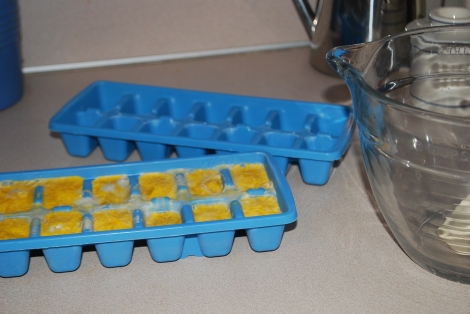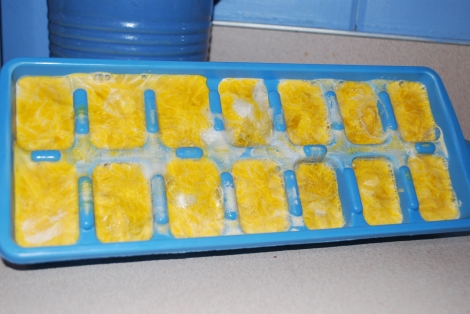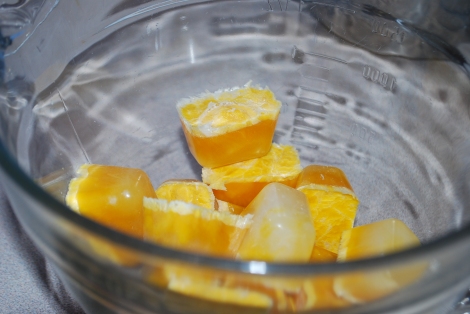Curious Fact: Eggs and meat from animals that eat a healthy, species-appropriate diet contain a nutrient and healthy fats profile very similar to that of highly-touted wild salmon. They also just plain taste good.
So what is a person to do when it’s the beginning of January and ALL the ducks have stopped laying due to shorter days and an unexpectedly cold start to the winter?
Why, crack out the frozen eggs, laid aside from the bounty of October, of course!! They won’t take the place of a freshly harvested egg for standing up in the pan and smiling sunny-side-up in the plate, but they sure as heck beat pale, watery, unappetizing $1-a-dozen eggs from Walmart!
I get a lot of folks asking for tips on freezing their own bounty. I know this is the wrong time of year for this to actually be helpful, but it’s on my mind while I sit here longing for a freshly harvested egg, so here it goes anyway. Simple process for freezing eggs:
Step One: Gather your supplies
You’ll need: A bowl, a whisk (or beater), two ice cube trays (I love the dollar store variety), and a dozen fresh eggs–the fresher the better
Step Two: Crack eggs into bowl
Sorry I don’t have a picture for this. As soon as my girls start laying again…
Step Three: Lightly beat eggs, just until the yolks are mixed up with the whites
Ditto on the pictures…
Step Four: Pour beaten eggs into ice cube trays
I have found a dozen duck eggs to fit neatly into two dollar store ice cube trays. Very convenient.
Step Five: Freeze eggs
At the risk of stating the obvious, be sure to keep the eggs upright and level while they are freezing. This is what they will look like when they are completely frozen.
Step Six: Crack frozen eggs into bowl
Try really hard not to drop any into the crack between stove and counter, at the peril of having to dig a now-useless cube out of the uncharted darkness and then spend half an hour cleaning up the grossness you were formerly blissfully ignorant of:
Step Seven: Pour Eggs Into Zipper Bags
Two dozen eggs fit neatly into a quart-sized freezer bag. Convenient.
Step Eight: Label and Store
Again, the obvious: Store in your freezer. Less obvious, but almost equally important: Unless you enjoy surprises when you are expecting a refreshing mango smoothie, label the eggs carefully to avoid later confusion. Bright orange frozen cubes can be easily mis-identified. Also, knowing when you put them in the freezer increases confidence in their freshness.
Eggs can be kept this way at least six months–probably longer. Certainly long enough to get you through the desert of recalcitrant poultry who choose to eat without working. To use, simply remove the number of cubes you need (ROUGHLY two cubes per egg desired) and thaw in another baggie in warm water.
Next summer, you’ll know what to do with all those extra eggs. In the meantime, just envy me my homegrown eggs while all you schmucks are standing in the grocery aisle deciding between the $6-a-dozen okay eggs and the $1-a-dozen yucky ones.








Thawed & ate scrambled eggs from my freezer this morning. Still pretty tasty, though I do miss those bright orange yolks smiling up at me in the pan.
So, are there any applications that the eggs no longer work for after freezing? I mean, can you still bake with them as well as fry, scramble, make omelettes, etc? I ask because liquid egg substitutes say you can’t make angel food cake with them, I believe…
Hi Wendy! Thanks for asking–that’s a really good question. They obviously don’t make very good soft-boiled eggs, or sunny-side-up fried. Also, of course, if you want to use whites and yolks separately, you’ll need to separate them before beating and freezing.
But my experience has been that fresh eggs frozen in this way do fine in most baking applications and even as scrambled eggs or omelets. I don’t bake angel food, so I can’t speak from experience on that, but I did find an article in Cook’s Illustrated on the topic. They said that some brands of liquid egg white did fine in their angel food applications, and some didn’t do well at all. I suspect that the quality of the eggs that you start with have a huge impact on this, but it also could have to do with the way they are processed before and after packaging.
I would love to hear from any readers who try this, whether whites frozen in this way can be used for meringues, angel food cake, etc. Because now I’m curious too!
LOVE this! Thanks for the tips. I may have to share this awesome info with my readers in the future and if I do I’ll be sure to give you credit. I think I need more chickens in order to have enough for freezing though. Our 5 (previously 6) little girls barely keep up with our egg consumption. 🙂
You’re welcome, and please feel free to share! The concept came from the wonderful community at Backyard Chickens (www.backyardchickens.com) and Organic Gardening (www.organicgardening.com), both of which have great forums. Of course the photos & actual text is my own, but the ideas are freeware. 🙂 That being said, I welcome links back to my site, so … share away!
Oh, about your chickies–how many eggs a day do they provide? We honestly don’t eat five a day, so we end up with lots of extras even when I have only a small flock. Of course, with 16 girls in the flock, summertime provides a glut of eggs. I sell some, hatch some, eat some, and freeze some. They certainly don’t go to waste!
On my way to the dollar store to get some new ice cube trays just for this occasion.
Wonderful!! Come back this winter and tell me how it worked for you. 🙂